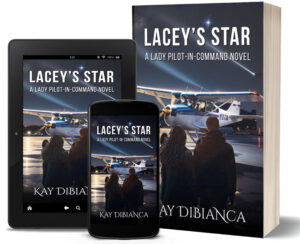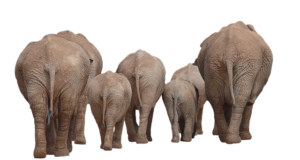
Characterization – noun – a description of the distinctive nature or features of someone or something.
* * *
I’m reading The Rise of Theodore Roosevelt by Edmund Morris. I don’t read a lot of biographies, and although I’ve only finished a few chapters so far in this one, I so enjoyed the setup to Roosevelt’s character in the prologue that I thought it would be a good topic for TKZ.
The prologue is set on January 1, 1907 when thousands of people are waiting patiently in line to enter the White House to shake the president’s hand and wish him a Happy New Year.
Through the description of that New Year’s Day, Morris alternates between the story of the crowd inching its way toward the White House doors, and descriptions of Roosevelt’s behavior, personality, and impact on others.
Take this example:
“Roosevelt may be the fastest handshaker in history (he averages fifty grips a minute), but he is also the most conscientious, insisting that all citizens who are sober, washed, and free of bodily advertising be permitted to wish the President of the United States a Happy New Year.”
The author gives us a good look at the crowd, the weather, and the overall state of the nation’s wealth. He enjoys using quotes from Roosevelt’s friends and others to help us define the man, as in this quote from Joseph G. Cannon, the Speaker of the House.
“Roosevelt’s all right,” says Cannon, “but he’s got no more use for the Constitution than a tomcat has for a marriage license.”
Others were quoted as calling him a “faker and a humbug.” No less a personage than Woodrow Wilson said, “He is the most dangerous man of the age,” and Mark Twain declared Roosevelt to be “insane.”
On the other hand, one veteran politician noted that Roosevelt had “unquestionably the greatest gift of personal magnetism ever possessed by an American.”
Such diverse statements interwoven with evidence of Roosevelt’s popularity and his delight in the job of the presidency give us a three-dimensional person who is so much more than the textbook president who created national parks, succeeded in getting the Panama Canal built, and had the Teddy Bear named after him.
As the crowd snakes its way into the room where Roosevelt is greeting them, Morris describes the president’s physical impact on the visitors. He quotes English statesman John Morley as saying, “Do you know the two most wonderful things I have seen in your country? Niagara Falls and the President of the United States.”
Although Roosevelt is often remembered for his pugnacity, it was his diplomacy in brokering a peace between Russia and Japan that earned him the Nobel Peace Prize. He was the first American to win a Nobel Prize.
And Theodore Roosevelt endeared himself to me by this statement: “Reading with me is a disease.” He managed to read at least one book a day. His interests varied widely, and he was himself an author.
After pages of defining the man by his behavior and the opinions of others, Morris finally gets down to specifics about Roosevelt’s appearance.
“Were it not for his high brow, and the distracting brilliance of his smile, Roosevelt would unquestionably be an ugly man.”
Morris then dedicates several long paragraphs to that dazzling grin that was so famous “that envelopes ornamented only with teeth and spectacles are routinely delivered to the White House.”
And he doesn’t stop there. Speaking of Roosevelt’s “white and even” teeth
“… they chop every word into neat syllables, sending them forth perfectly formed but separate, in a jerky staccatissimo that has no relation to the normal rhythms of speech… His very voice seems to rasp out of the tips of his teeth.”
A colleague of Roosevelt’s described its effect. “I always think of a man biting tenpenny nails when I think of Roosevelt making a speech.”
The nuance continues through the long prologue giving us a 360-degree view of the optimism, energy, love of power, and determination of our twenty-sixth president as he drives through life full speed ahead.
Only at the start of Chapter One does Morris back up and begin to tell the history of the man.
* * *
Theodore Roosevelt was a larger-than-life historical figure, so describing the many dimensions of his personality may not be surprising. But reading Morris’s work has made me put some thought into descriptions of characters in my own writing. Direct and indirect characterization can be powerful tools to round out characters and give the reader an entertaining story.
* * *
So TKZers: How do you describe your main characters? Physical description, speech, behavior, opinions of others? How much time and nuance to you put into your characters?
* * *
Note: Once again, I’ll be traveling between old and new homes as we try to finalize this (very long) move. I’ll respond to comments as soon as I can.
Another Side of Sunshine
“The story excels at honoring the emotional realities of childhood without veering into sentimentality. It’s a smart, well-constructed mystery that values relationships over rivalry, process over prizes, and growth over glory. Fans of From the Mixed-Up Files of Mrs. Basil E. Frankweiler and The Westing Game will find familiar pleasures here, wrapped in fresh clues and grounded by a heroine who learns to trust her instincts—and the people around her.” —Prairie Book Reviews
Click the image to go to the Amazon book page.


 Every character is the hero of their own story. Even the villain.
Every character is the hero of their own story. Even the villain.












 Villains are always useful in helping protagonists overcome their shortcomings and face down danger. An example of this was the film “Die Hard” where the protagonist John McClane (Bruce Willis) matches wits with the villainous deuteragonist Hans Gruber (Alan Rickman.)
Villains are always useful in helping protagonists overcome their shortcomings and face down danger. An example of this was the film “Die Hard” where the protagonist John McClane (Bruce Willis) matches wits with the villainous deuteragonist Hans Gruber (Alan Rickman.)








 As writers, it shouldn’t surprise you to learn that even while silent, our bodies speak volumes. Nonverbal cues — body language — are the physical behavior, expressions, and mannerisms that communicate how we really feel.
As writers, it shouldn’t surprise you to learn that even while silent, our bodies speak volumes. Nonverbal cues — body language — are the physical behavior, expressions, and mannerisms that communicate how we really feel.
 Zoosemiotics is the study of animal communication, and it’s played an important role in the development of ethology, sociobiology, and the study of animal cognition. Writers can also learn from zoosemiotics. Think characterization and scene enhancement.
Zoosemiotics is the study of animal communication, and it’s played an important role in the development of ethology, sociobiology, and the study of animal cognition. Writers can also learn from zoosemiotics. Think characterization and scene enhancement. Keep in mind, a dog could use more than one response at a time. Hence why it’s important to analyze the entire dog, not just one body cue (the same applies to characters).
Keep in mind, a dog could use more than one response at a time. Hence why it’s important to analyze the entire dog, not just one body cue (the same applies to characters).